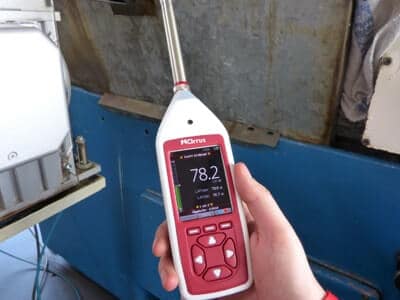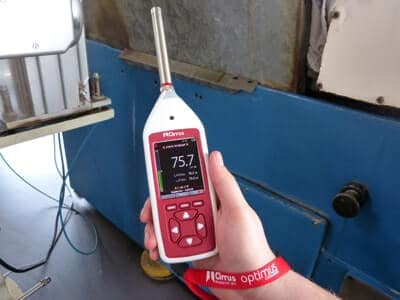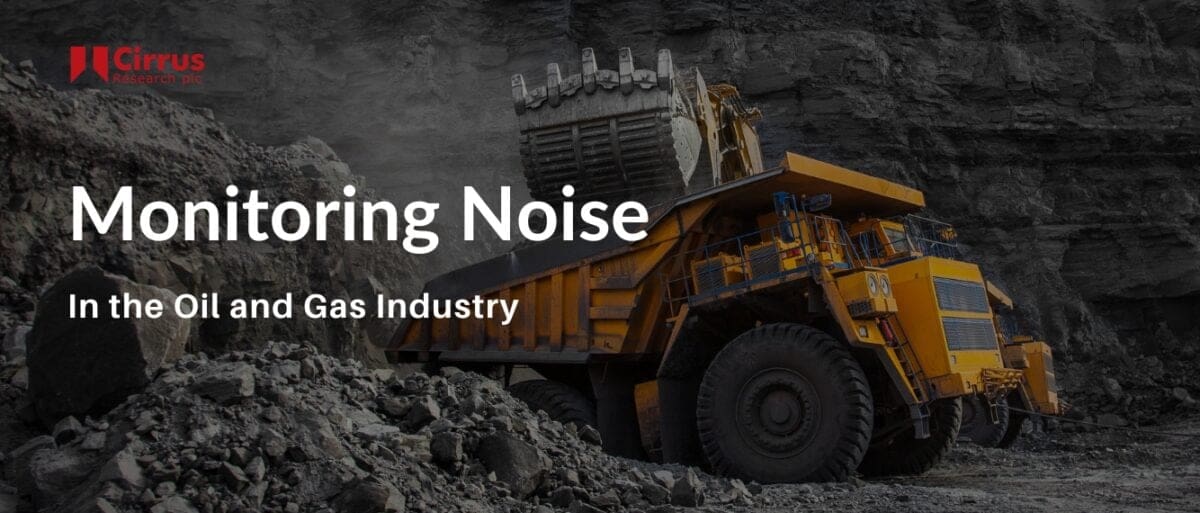Cirrus Research is on the case this time, investigating industrial noise. In a factory in the Rhine-Main area, we measured the noise levels of centreless cylindrical grinding machines, as always equipped with our Optimus sound level meter.
These machines each have a grinding wheel and a regulating wheel, both of which rotate in the same direction, as well as a slightly bevelled guide rail. As soon as the cylindrical workpiece comes into contact with both wheels, These machines each have a grinding wheel and a regulating wheel, both of which rotate in the same direction, as well as a slightly bevelled guide rail. As soon as the cylindrical workpiece comes into contact with both wheels, it is drawn evenly onto the guide rail and comes out ground at the other end. This process is therefore also called ‘centreless through-feed grinding’. Unlike centred grinding processes, no fixture is needed to locate and secure the workpiece. This makes centreless grinding a precise, efficient and cost-effective method that is profitable for mass production and for the manufacture of individual parts. And of course, quite a few decibels are generated in the process. The ideal environment for our ‘Cirrus measures…’ team!

In this video, we have positioned the measuring instrument in the middle of the hall and started by simply capturing the general background noise. You can hear three machines, as well as the cooling water supply and an extraction system. The measured maximum value is 71.5 dB. This roughly corresponds to the noise level of a lawn mower or a television that is turned up loud.
Sound level measurement of a through-feed grinding machine during production

Sound level measurement of a through-feed grinding machine during production
The system was measured at two different points. The two values differ by only 1 dB because the position of the right measurement is closer to the extraction system. Both measured values are just under 80 decibels and thus approach the noise level of a jackhammer. A strong machine in every respect!

At the end of the production day, the machines have to run dry before they are switched off to remove the cooling water from the grinding discs. In this video, the three machines mentioned above were measured again – but without cooling water supply and extraction system due to the dry run. Consequently, the maximum value here is only 66 dB. A relaxed group discussion should be possible in this state, despite the machine running, as this is usually even louder.
Sound level measurement of a through-feed grinding machine during dry running

Sound level measurement of a through-feed grinding machine during dry running
For the measurement during dry running, the grinding machine was measured again at the same point as before under load. Here the two values differed by almost 2 dB. The left measurement is slightly louder at 75.7 dB, because the oil pump is located at this point in the machine and can be clearly heard.
The Cirrus Research team would like to thank the company for the joint machine noise measurement and wishes them continued success with centreless grinding.



